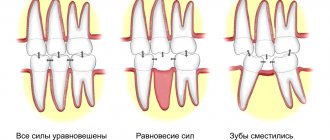Root, its properties, root extraction This article continues the topic of the root of a number. Here we will deal with root extraction . First, let's define what is called root extraction and establish when the root is extracted. Next, we will study the principles on which finding the value of a root is based, after which we will use examples to consider the main methods of extracting roots from natural numbers, and then from fractional numbers.
Page navigation.
- What does root extraction mean?
- When is the root extracted?
- Methods and examples of root extraction. Using a table of squares, a table of cubes, etc.
- Factoring a radical number into prime factors.
- Extracting roots from fractional numbers.
- Extracting the root of a negative number.
- Bitwise determination of the root value.
What is square root
The definition of the arithmetic square root does not add clarity, but it is worth learning it:
| The arithmetic square root of a non-negative number a is a non-negative number whose square is equal to a . |
The definition of a square root can also be represented in the form of formulas: √a = x x2 = ax ≥ 0 a ≥ 0
From the definition it follows that a cannot be a negative number. That is, what is under the root is necessarily a positive number.
To understand why it is this way and no other way, let's look at an example.
Let's try to find the root of √-16
Here it is logical to assume that 4, but let's check: 4 * 4 = 16 - does not converge.
If - 4, then -4 * -4 = 16, (minus by minus always gives a plus).
It turns out that not a single number can give a negative result when squared.
The numbers under the root sign must be positive.
Based on the definition, the value of the root must also not be negative .
Here reasonable questions may arise as to why, for example, in the example x2 = 16, x = 4 and x = -4.
Heron's method
What to do when you need to at least approximately know what the extracted root is equal to (if it is impossible to obtain an integer value)? A quick and fairly accurate result is obtained by using Heron's method . Its essence is to use an approximate formula:
√R = √a + (R - a) / 2√a,
where R is the number whose root needs to be calculated, a is the nearest number whose root value is known.
Let's look at how the method works in practice and evaluate how accurate it is. Let's calculate what √111 is equal to. The number closest to 111 whose root is known is 121. Thus, R = 111, a = 121. Substitute the values into the formula:
√111 = √121 + (111 — 121) / 2 ∙ √121 = 11 — 10 / 22 ≈ 10,55.
Now let's check the accuracy of the method:
10,55² = 111,3025.
The error of the method was approximately 0.3. If the accuracy of the method needs to be improved, you can repeat the previously described steps:
√111 = √111,3025 + (111 — 111,3025) / 2 ∙ √111,3025 = 10,55 — 0,3025 / 21,1 ≈ 10,536.
Let's check the accuracy of the calculation:
10,536² = 111,0073.
After re-applying the formula, the error became completely insignificant.
Difference between square root and arithmetic quadratic equation
First of all, to differentiate between these two concepts, remember:
- x2 = 16 is not equal to x = √16.
These are two expressions that are not identical to each other.
- x2 = 16 is a quadratic equation.
- x = √ 16 is the arithmetic square root.
From the expression x2 = 16 it follows that:
- |x| = √16, this means that x = ±√16 = ±4, x1 = 4, x2 = -4.
If the two vertical sticks next to x confuse you, read our article on the modulus of a number.
At the same time, from the expression x = √16 it follows that x = 4.
If the situation still seems confusing and illogical, just remember that a negative number can only be a solution in a quadratic equation. If the solution is “minus”, there are two options:
- Example solved incorrectly
- This is a quadratic equation.
If you take the square root of a number, you can be sure that you will get a “positive” result.
Let's look at an example to finally clarify the difference between a square root and a quadratic equation.
Two expressions are given:
- x2 = 36
- x = √36
The first expression is a quadratic equation.
|x| = √36 x1 = +6 x2 = -6.
The second expression is the arithmetic square root.
√36 = 6 x = 6.
We see that the result of solving the first expression was two numbers - negative and positive. And in the second case - only positive.
Eliminating obviously unnecessary numbers
So, we have 10 numbers - candidates for the root. We got them very quickly, without complex thinking and multiplication in a column. It's time to move on.
Believe it or not, we will now reduce the number of candidate numbers to two - again without any complicated calculations! It is enough to know the special rule. Here it is:
The last digit of the square depends only on the last digit of the original number .
In other words, just look at the last digit of the square and we will immediately understand where the original number ends.
There are only 10 digits that can come in last place. Let's try to find out what they turn into when squared. Take a look at the table:
| 1 | 2 | 3 | 4 | 5 | 6 | 7 | 8 | 9 | 0 |
| 1 | 4 | 9 | 6 | 5 | 6 | 9 | 4 | 1 | 0 |
This table is another step towards calculating the root. As you can see, the numbers in the second line turned out to be symmetrical relative to the five. For example:
22 = 4; 82 = 64 → 4.
As you can see, the last digit is the same in both cases. This means that, for example, the root of 3364 must end in 2 or 8. On the other hand, we remember the restriction from the previous paragraph. We get:
[Caption for the picture]
Red squares indicate that we do not yet know this figure. But the root lies in the range from 50 to 60, on which there are only two numbers ending in 2 and 8:
[Caption for the picture]
That's all! Of all the possible roots, we left only two options! And this is in the most difficult case, because the last digit can be 5 or 0. And then there will be only one candidate for the roots!
Writing irrational numbers using square roots
An irrational number is a number that cannot be expressed as a fraction.
Most often, irrational numbers can be found in the form of roots, logarithms, powers, etc.
Examples of irrational numbers:
√2 = 1,414213…;
π = 3.141592…;
e = 2.718281…. .
To simplify the writing of irrational numbers, mathematicians introduced the concept of square roots. Let's look at a couple of examples to see the square root in action.
The equation is given: x2 = 2.
We immediately run into a problem, since obviously no integer is suitable.
Let's look at the numbers to make sure:
1 * 1 = 1, 2 * 2 = 4, 3 * 3 = 9.
Negative numbers give the same result. This means that the result of the solution cannot be integers.
The solution is as follows: Build a graph of the function y = x2 . We mark the solutions on the graph: -√2; √2.
If you try to extract the square root of 2 using a calculator, the result will be as follows: √2 = 1.414213….
The answer is not written down in this form - you need to leave the square root. x2 = 2. x = √2 x = -√2.
Root extraction
Solving examples with square roots is much easier if you memorize as many squares of numbers as possible. To do this, use the table -
and use it to solve puzzles.
Table of squares
Here are some examples of root extraction to help you learn how to use the table:
- 1. Take the square root: √289
We look for the number 289 in the table, move from it to the left and up to determine the numbers that form the number we need.
Left - 1, up - 7.
Answer: √289 = 17.
- 2. Take the square root: √3025
We look for the number 3025 in the table. Left - 5, up - 5.
Answer: √3025 = 55.
- 3. Take the square root: √7396
We look for the number 7396 in the table.
Left - 8, up - 6.
Answer: √7396 = 86.
- 4. Extract the root: √9025
We look for the number 9025 in the table.
Left - 9, up - 5.
Answer: √9025 = 95.
- 5. Extract the root √1600
We are looking for the number 1600 in the table.
Left - 4, up - 0.
Answer: √1600 = 40.
Extracting a root is finding its value.
Removing the multiplier from under the root sign
It seems that we have figured out how to add a multiplier to the root. But algebra is such an algebra, so now it would be nice to remove the factor from under the root sign.
An expression is given in the form of the square root of the product.
You can probably easily find the square root of anything by now, so you know what to do.
We extract the root of all available factors.
In this expression, we can only take the square root of 4, so:
Thus, the multiplier is taken out from under the root sign.
Let's look at examples. Try to remove the factors from under the root sign yourself, checking the answers.
- √28
We factor the radical expression 28 = 7*4.We take the root of 4. We leave the factor 7 under the root sign.
- Answer: according to the rule for extracting the square root of a product, Since the factor taken out must be in front of the radical sign, we swap them.
- Remove the factor from under the root sign in the expression: √24
Answer: We factor the expression under the root into factors 24 = 6 * 4. - Simplify the expression:
Let us take out the factor from under the root sign in the last two expressions.
Multiply (-4 * 4) = -16. We write the rest of the expression unchanged.
We see that in the entire expression there is one common factor - √5. Let's take the common factor out of brackets:
Next, we calculate everything in brackets:
Working with Variables
Apart from the definition, we know two things about roots. First, roots lower powers but add modules:
Secondly, roots can be multiplied and divided. But not always:
So far we have only trained on specific numbers. And many may wonder: why all this talk about modules and restrictions?
Now we will replace numbers with letters - and the task will become dramatically more complicated. Or it won’t become more complicated - if you carefully study what is written next. :)
3.1. Expanding a module through properties of degrees
Let's start with something simple. We already know how to get rid of the exact degree:
Let's try to apply this formula to two different expressions:
In the first line, we easily expanded the modulus, since we know that the number under the modulus is negative. Then they did the math and got the answer.
But how to expand the module in the second line? After all, the expansion rules will change depending on what value the variable takes. And if there are no additional restrictions on the variable, then the module will remain unopened. Take a look:
Replace the expression with an identically equal one that does not contain the root sign:
From the above examples it is clear:
- In lines (2) and (4) we can expand the module without knowing anything about the variable;
- In lines (1) and (3), the module could not be expanded.
Why? Even powers in lines (2) and (4) for any value of the variable will be a positive number or zero. Therefore, the module clearly opens with a “plus” sign.
The odd degree in lines (1) and (3) does not have this property: it can be either a positive number or a negative one. Therefore, the module cannot be opened.
Try it yourself:
Exercise. Replace the expression with an identically equal one that does not contain the root sign:
[show answer]
Even powers are always non-negative, odd powers can take any sign:
However, the modulus of odd degree can also be expanded. If the problem contains additional conditions.
3.2. Accounting for additional restrictions
Often, the problem statement itself contains restrictions on the variable, which help to unambiguously reveal the module. Example:
Simplify the expression:
We work according to the rules that we studied above:
Please note: in line (2) the even powers under the root give three non-negative numbers, so the root can be divided into three isolated factors - the domain of definition will not change; then in line (3) we see the even degree under the modulus and expand it.
Let’s write down the result again and supplement it with the initial conditions:
In the first case, the expression under the module is positive or zero, so the module is uniquely expanded with a plus sign. In the second, it is negative or zero, so the module is expanded with a minus sign:
You may be wondering: why do we write the factor 1 or −1, but not separately consider the factor 0? This is the trick of the module:
Thus, at zero the module can be expanded in any convenient way.
Try it yourself:
Exercise. Simplify the expression:
[show answer]
These were very primitive expressions that boiled down to revealing a module. We practiced an important new skill with them. Now let's use this skill to solve more interesting problems.
Comparison of square roots
We have almost thoroughly examined the arithmetic square root, learned how to multiply, divide and raise it to a power. Now you can easily enter factors under the root sign and take them out from there. All that remains is to learn how to compare roots and become an invincible theorist.
So, to understand how to compare two square roots, you need to remember a couple of rules.
If:
- √a < √b, then a < b
- √a = √b, then a = b
Let's look at it with an example.
Compare two expressions: √70 and 8√2
First of all, let's transform the second expression: 8√2 = √64 * √2 = √64*2 = √128.
70 < 128.
This means that √70 < 8√2.
Let's remember
The larger the number under the root sign, the larger the root itself.
Practice comparing roots. Check your results with the answers.
- Compare two expressions: √50 and 9√5
Answer: transform the expression 9√5.9√5 = √81 * √5 = √81*5 = √405
50 < 405
This means that √50 < 9√5.
- Compare two expressions: 6√5 and √18
Answer: transform the expression 6√5.6√5 = √36 * √5 = √36*5= √180
180 > 18
This means that 6√5 > √18.
- Compare two expressions: 7√12 and √20
Answer: transform the expression 7√12.7√12 = √49 * √12 = √49*12 = √588
588 >20
This means that 7√12 > √20.
As you can see, there is nothing complicated about comparing arithmetic square roots.
The most important thing is to learn the formulas and consult a table of squares if the root values are too large for easy mental calculation.
Don't be afraid to use supporting materials. Mathematics is simply created in order to surround yourself with hints and hints.
When you feel that you have become sufficiently trained in solving examples with square roots, you can afford to resort to the help of online calculators from time to time. They will help you solve examples faster and be more effective.
There are many such calculators on the Internet, here is one of them.
How to reduce roots in fractions?
If there is a square root in the denominator, then get rid of it. Multiply the numerator and denominator by the square root you want to remove. If the numerator and denominator contain numbers that can and should be reduced. Simplify such expressions as you would any fraction.
Interesting materials:
What are people with the same first and last names called? What are people with different hair colors called? What are people called who have frequent mood swings? What are the May frosts called? What is the name of pasta? What are small bananas called? What are the small pictures called? What are the names of the cute little dogs? What are the continents called and where are they located? What are Timati's bears called?











